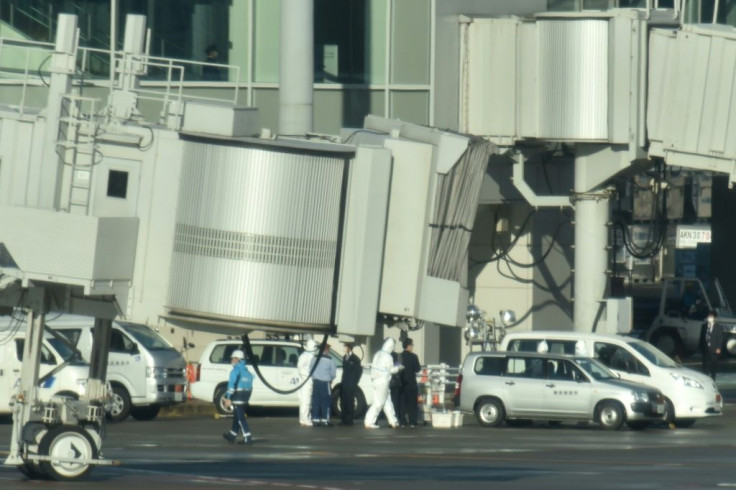China Coronavirus Update: China To US Flights Cancelled Over Virus Outbreak

KEY POINTS
- In nine weeks, the Wuhan coronavirus has sickened more people than SARS did in nine months
- The rapid spread of the coronavirus has led the White House to consider temporarily banning flights to and from China
- U.S. airlines report a sharp drop in passengers flying to and from China
Scientists in the China, Hong Kong and the United States are racing to develop a vaccine against the raging Novel coronavirus (2019-nCov) outbreak ravaging mainland China. This fast-spreading disease on Wednesday (China time) exceeded the 2002-2003 SARS epidemic in the total number of confirmed cases in mainland China.
This horrific milestone testifies to the unnerving speed -- mostly through person-to-person contact -- at which 2019-nCoV is spreading on the mainland. The first case of this new virus (also called the Wuhan coronavirus) was reported only on Dec. 1, 2019. Others say the date is December 8.
The official casualty count as of 11:30 a.m. Hong Kong time Wednesday came to 6,061 cases and 132 deaths (all inside China). In contrast, the SARS outbreak from November 2002 to July 2003 infected 5,327 people in mainland China and killed 349 others, according to World Health Organization (WHO) data. The new 2019-nCoV outbreak achieved this grisly toll in only nine weeks compared to the nine months it took for SARS to attain the same result.
The incredibly rapid spread of the coronavirus led the Trump administration on Tuesday to announce it's seriously considering a temporary ban on direct flights arriving to and from China. White House officials called executives at major U.S. carriers on Tuesday, telling them a temporary ban on China flights is on the table, according to knowledgeable sources.
White House sources, however, said there is no guarantee the administration will do so but the feeling at this time is it's the right thing to do since the coronavirus outbreak seems to be spreading out of control.
The proposed restrictions will affect airports across the United States, said administration officials. A final decision will be made, likely within this week.
Media reported a senior staff meeting was held at the White House on Monday at which the restrictions were discussed. U.S. health officials also report the administration is looking at a range of measures to contain the fast-spreading virus.
Economic reasons are also forcing some airlines to consider suspending flights. Simply stated, there just aren't many people flying to and from China today.
United Airlines, which has the most number of flights (about a dozen daily) to Hong Kong and mainland China among all U.S. airlines, on Tuesday announced it will cancel dozens of flights in February to Hong Kong and mainland China.

United also canceled two dozen U.S. flights to and from China on Tuesday. The 24 round trips involve routes originating in San Francisco, Newark, Dulles and Chicago's O'Hare International airports with destinations in Beijing and Shanghai.
United also admitted it's experiencing a “significant decline in demand for travel to China.” United and its rivals, Delta Air Lines and American Airlines, are waiving cancellation and change fees for pasengers booked to China.
"Due to a significant decline in demand for travel to China, we are suspending some flights between our hub cities and Beijing, Hong Kong and Shanghai beginning Feb. 1 through Feb. 8," said a company statement.
© Copyright IBTimes 2025. All rights reserved.





















